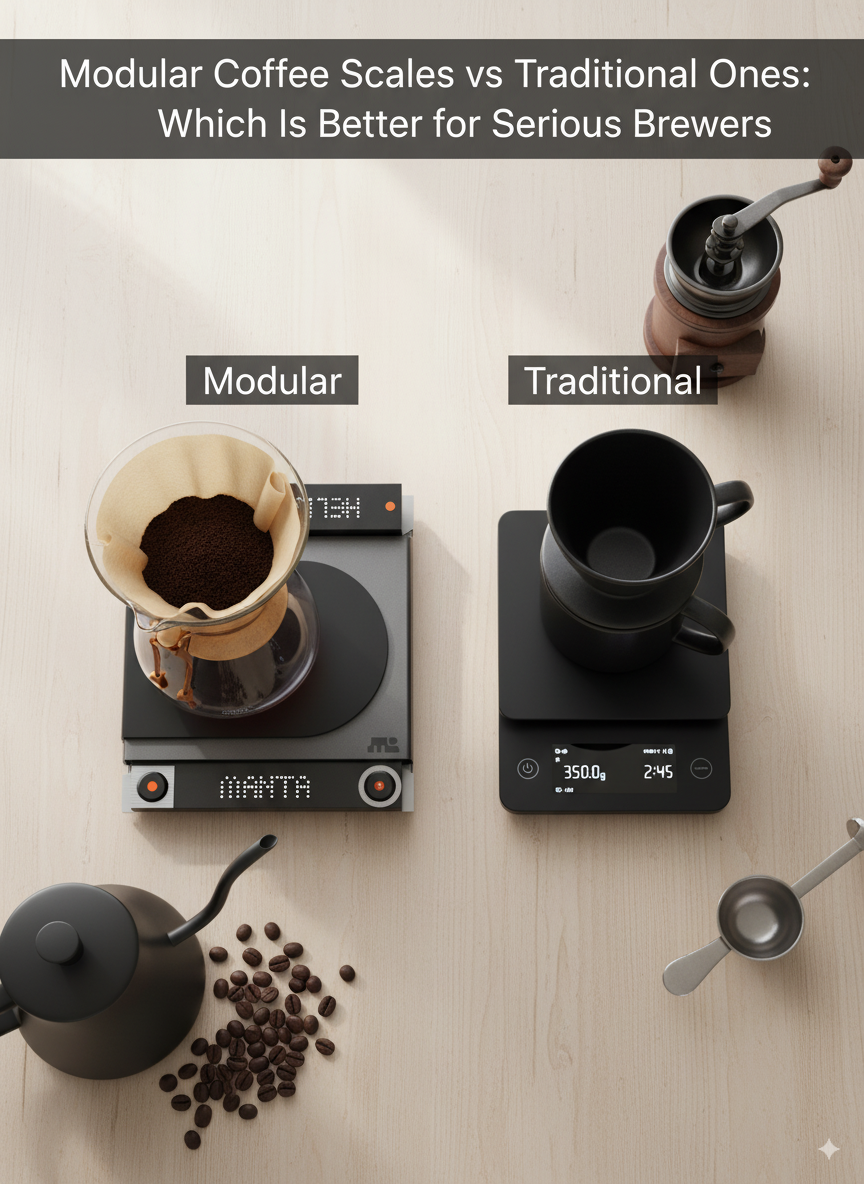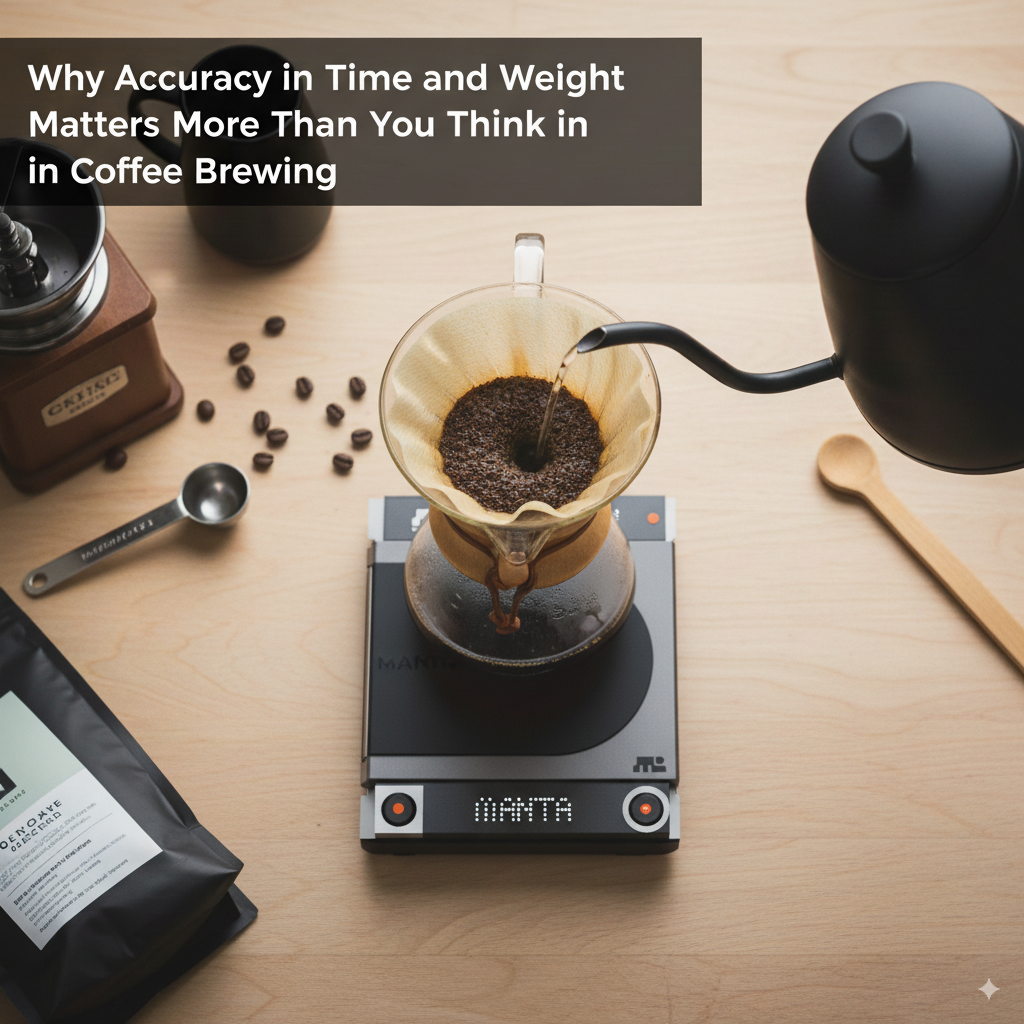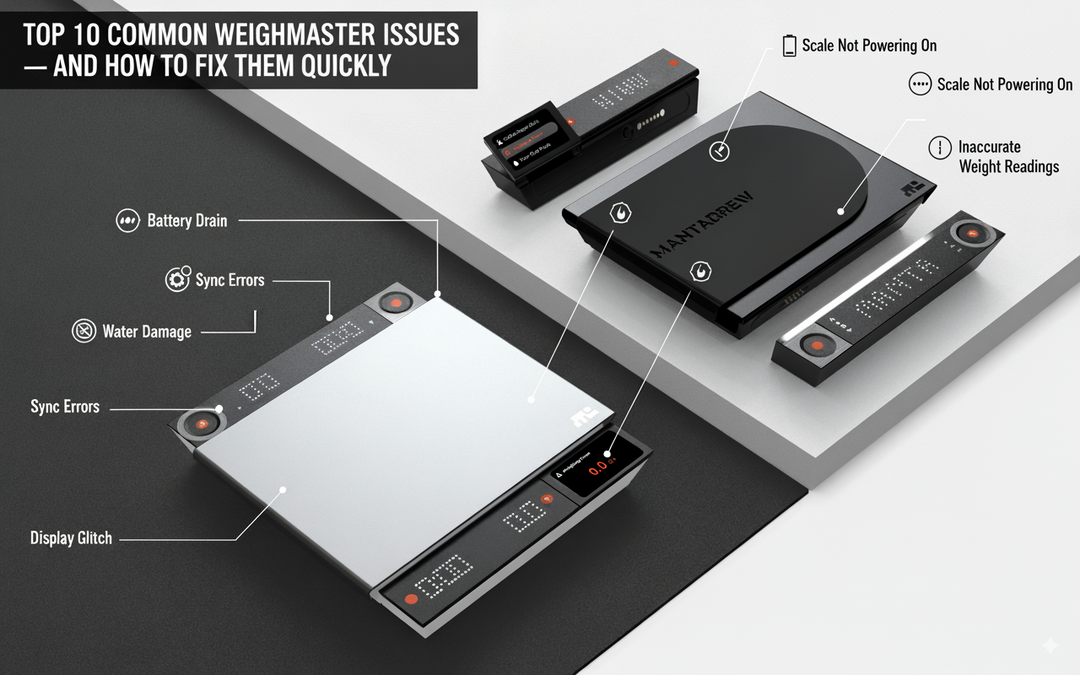Why Timing Matters: Using Your Scale's Timer for Perfect Pour Overs
In the world of specialty coffee, the pour-over method holds a special place. It’s celebrated for the control it gives you — over the water temperature, grind size, pouring speed, and most critically, time. Yet, timing is often overlooked by home brewers who rely on guesswork or habit.
But here’s the truth: if you're not timing your brews, you're missing out on the repeatable magic of consistently great coffee.
A built-in timer on your scale isn’t just a fancy extra. It’s a powerful tool for precision and mastery. Whether you're a beginner looking to improve or an enthusiast dialing in your favorite beans, this article will help you understand why timing matters, and how to make the most of it — with the help of your smart scale.
1️⃣ What Is Extraction Time in Pour Over Brewing?
☕ Definition: The Heartbeat of Your Brew
Extraction time is the total amount of time your water is in contact with your coffee grounds. It starts either with the first pour or first drip, depending on how you measure, and ends once all water has passed through the coffee bed and into your server or cup.
In other words, it’s the lifespan of the brew — and every second of it counts.
⏱ Typical Brew Time Breakdown
For most pour-over methods (such as V60, Chemex, or Kalita), a total brew time between 2:30 and 3:30 minutes is ideal. This usually includes:
-
Bloom phase (30–45 seconds): Your initial pour to let gases escape and pre-wet the grounds.
-
Main pours: Where the real extraction happens, often in 2–3 pulse pours.
-
Drawdown: The last stage where the remaining water filters through.
🎯 Why Time Dictates Taste
Time affects how much flavor is extracted from the coffee. It’s a balancing act:
-
⏱ Too short (under 2:00): Results in sour, weak, and under-extracted coffee. The water didn’t have enough time to dissolve the full flavor spectrum.
-
⏱ Too long (over 4:00): Causes bitterness, muddiness, and over-extraction. The water pulled too much — even the unpleasant stuff.
-
✅ Balanced time: Brings out sweetness, clarity, and complexity.
That’s why professional baristas and home enthusiasts alike take timing seriously — because it’s directly tied to taste and quality.
2️⃣ Benefits of Using a Timer on Your Scale
👁️🗨️ Hands-Free Precision
The biggest advantage of using a built-in timer on your scale is convenience without compromise. You don’t need to glance at your phone, fumble with a stopwatch, or mentally estimate how long it’s been since you started pouring.
Your scale becomes your central command: measuring both time and weight in one view, so you can focus on what really matters — your pour.
🔍 Control Every Brew Phase
Each stage of the pour-over process has its own timing “sweet spot.” With a timer:
-
You can ensure your bloom lasts just the right amount of time (generally 30–45 seconds)
-
You can measure how long your main pour takes, helping refine your pulse pour rhythm
-
You can track drawdown time, which can reveal channeling or grind issues
Timing each segment makes your brewing more intentional and repeatable.
🧠 Real-Time Feedback
When your timer is always running, you’re instantly aware if:
-
You’re pouring too quickly (short total time)
-
Your grind is too fine (long drawdown)
-
Your bloom is stalling (CO₂ not escaping well)
With this feedback, you can adjust your grind size, pour rate, or recipe intelligently — rather than blindly guessing what went wrong.
🔁 Build Consistency & Muscle Memory
Brewing is both a science and an art. But like learning any skill, repetition creates consistency. A scale timer helps reinforce good brewing habits:
-
Pour at a consistent pace
-
Hit target times without thinking
-
Brew confidently even before your first sip
The more you use it, the more intuitive and natural good brewing becomes.
3️⃣ How to Use the Timer Feature on Smart Scales
Most smart coffee scales — including the MANTABREW WeighMaster — offer multiple timing modes to fit different brewing styles and preferences.
▶️ Manual Start Mode
In this mode, you press a dedicated button to start the timer when you're ready. Most brewers prefer to hit "Start" right before the first pour, so they can:
-
Control bloom time precisely
-
Start at their own pace
-
Have maximum control over the brew’s timeline
This method is ideal for slower, more meditative brewing sessions.
⚡ Auto Start Mode
Some scales offer an automatic timer start based on weight detection. The moment the first drop or pour is registered on the scale, the timer starts — no hands required.
This is ideal if you:
-
Brew in a hurry
-
Want to minimize distractions
-
Prefer a streamlined, no-fuss workflow
🔄 Timer + Flow Rate: The Smart Combo
High-end scales (like the WeighMaster) combine a timer with real-time flow rate display, showing how fast you’re pouring (in grams per second). This is a game changer.
Why?
Because timing alone doesn’t guarantee good results — but timing + flow control brings true mastery. You’ll learn:
-
If you’re pouring consistently across sessions
-
Whether certain pours are too aggressive or too timid
-
How to replicate or tweak flow rate to match your grind
It’s like having a pour-over coach on your counter.
4️⃣ Troubleshooting Brew Timing Issues
Even with a timer, you might notice your brew time isn’t hitting the target. Here's how to troubleshoot using your timer data:
| ⚠️ Problem | 🚨 Likely Cause | 💡 Fix |
|---|---|---|
| Brew finishes too quickly (<2:00) | Grind too coarse, pour too fast | Use finer grind, slow your pour |
| Brew takes too long (>4:00) | Grind too fine, pour too slow | Coarsen grind, increase pour flow |
| Time varies wildly each time | Inconsistent technique or pouring | Practice steady, even pour patterns |
The goal isn’t always to hit an exact number, but to find a repeatable time range that gives you the flavor you love — and replicate it consistently.
5️⃣ Building Your Ideal Brew Profile
The timer isn’t just a tool for the moment — it’s a feedback tool for long-term improvement.
Start logging your brews. Create a simple brew journal (digital or paper) where you record:
-
Coffee type & roast date
-
Grind setting
-
Dose (g) and water (ml)
-
Total time
-
Time per phase: bloom, main pour, drawdown
-
Tasting notes: sweetness, acidity, body, finish
Over time, you’ll start spotting patterns:
-
Certain beans like shorter brews
-
Some grind settings require longer bloom
-
Your preferred cup comes from 2:50–3:10 brews
This is how you go from casual brewer to pour-over pro.
✅ Final Thoughts: Make Time Work for You
A coffee scale with a built-in timer is more than a convenience — it’s a brewing partner.
It lets you track what matters, eliminate guesswork, and refine your craft over time. Whether you're brewing your first V60 or dialing in for a competition-level cup, timing gives you control.
And control? That’s the real recipe for great coffee.
So next time you reach for your kettle, remember: don’t just measure grams. Measure moments — and make every second count.
📌 Pro Tip: If you're using the MANTABREW WeighMaster, try combining Auto Timer with the Flow Rate display for the ultimate brew assist. You'll see exactly how time and water interact — and unlock a whole new level of control.





